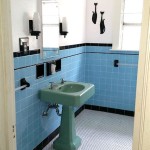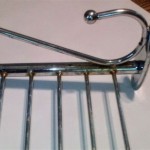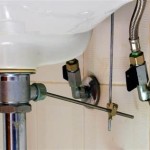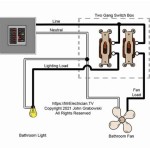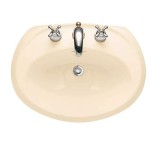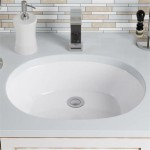Replacing Bathroom Floor Rotted In Kitchen Cabinets: How To Install
Discovering rot in your bathroom or kitchen floor, especially under cabinets, is a homeowner's nightmare. This issue requires immediate attention to prevent further damage and potential health hazards. This article provides a comprehensive guide on how to address and rectify rotted flooring beneath bathroom and kitchen cabinets, offering a step-by-step approach to ensure a successful repair.
1. Assessing the Damage and Gathering Supplies
Before undertaking any repairs, thoroughly assess the extent of the rot. Remove the baseboards around the affected cabinets to get a clear view of the subfloor. Use a screwdriver or awl to probe the wood. Soft, spongy areas indicate rot. Determine the size of the affected area to estimate the amount of replacement material needed. Once the extent of the damage is understood, gather the necessary supplies, including: safety glasses, work gloves, a dust mask, a pry bar, a reciprocating saw or circular saw, a hammer, a chisel, a shop vacuum, plywood subfloor (matching the existing thickness), construction adhesive, wood screws, a moisture meter, and flooring materials (tiles, vinyl, etc.).
2. Removing the Affected Cabinets and Flooring
Depending on the severity of the rot and the cabinet design, it may be necessary to remove the affected cabinets. If cabinets are directly attached to the damaged subfloor, carefully remove them. Label all cabinet parts and hardware for easy reinstallation. Next, remove the damaged flooring material around the rotted area. If the flooring is tile, use a hammer and chisel to break and remove the tiles. For vinyl or linoleum, carefully cut and peel back the affected section. Ensure complete removal of the rotted subfloor by cutting it out with a reciprocating saw or circular saw. Cut slightly beyond the affected area to reach solid, undamaged wood.
3. Addressing the Source of Moisture
Identifying and addressing the root cause of the rot is crucial to prevent recurrence. Common culprits include leaking pipes, inadequate ventilation, or spills that weren't properly cleaned. Inspect plumbing for leaks and repair as needed. Ensure proper ventilation in the bathroom and kitchen to minimize moisture buildup. If the moisture source is a leaky pipe, address the leak before proceeding with the repairs. Allow the area to completely dry using fans and dehumidifiers before replacing the subfloor.
4. Installing the New Subfloor
Measure and cut the new plywood subfloor to fit the opening created by removing the rotted section. Apply construction adhesive to the supporting joists or existing subfloor. Securely fasten the new subfloor with wood screws, ensuring it sits flush with the surrounding subfloor. Use a level to confirm the evenness of the new subfloor. Any unevenness can cause problems with the installation of the new flooring material.
5. Replacing the Flooring and Cabinets
Once the new subfloor is securely in place, install the chosen flooring material following the manufacturer’s instructions. Ensure the flooring is properly sealed around the edges to prevent future moisture penetration. If cabinets were removed, reinstall them carefully, ensuring they are properly secured to the new subfloor. Reattach any removed baseboards and trim.
6. Preventing Future Rot
Regular maintenance and preventative measures can significantly reduce the risk of future rot. Ensure proper ventilation in bathrooms and kitchens by using exhaust fans and keeping windows open when possible. Immediately address any leaks or spills. Periodically inspect plumbing and appliances for signs of leaks. Regularly inspect the area under sinks and around toilets for signs of moisture. Consider using a moisture meter to check for hidden moisture. Applying a sealant to the edges of the flooring around the base of cabinets can create an additional barrier against moisture infiltration.
7. Professional Assistance
While many homeowners can successfully tackle this repair themselves, extensive damage or complex plumbing issues may require professional assistance. If the rot is extensive, significantly impacting structural integrity, or if you are uncomfortable working with plumbing, consult a qualified contractor or plumber. Professional expertise can ensure the repair is done correctly and prevent further issues down the line. A professional can also help identify the underlying cause of the rot if it is not readily apparent.

How To Replace A Rotten Kitchen Cabinet Floor 8 Simple Steps

How To Repair Your Water Damaged Floor Cabana State Of Mind

How To Fix Rotted Cabinet Bottom Floor Much Sink Install House Remodeling Decorating Construction Energy Use Kitchen Bathroom Bedroom Building Rooms City Data Forum

How To Replace A Rotten Kitchen Cabinet Floor 8 Simple Steps

How To Replace Rotted Wood Under A Kitchen Sink Diy Guide Dengarden

Replace Sink Cabinet Floor

How To Replace Rotted Sink Base Cabinet Floor Bottom Easy Home Mender

How Do I Repair My Water Damaged Sink Cabinet Hometalk

Fixing A Water Damaged Cabinet Base Underneath Kitchen Sink

Replacing The Kitchen Sub Flooring Wood Grain Cottage
Related Posts
